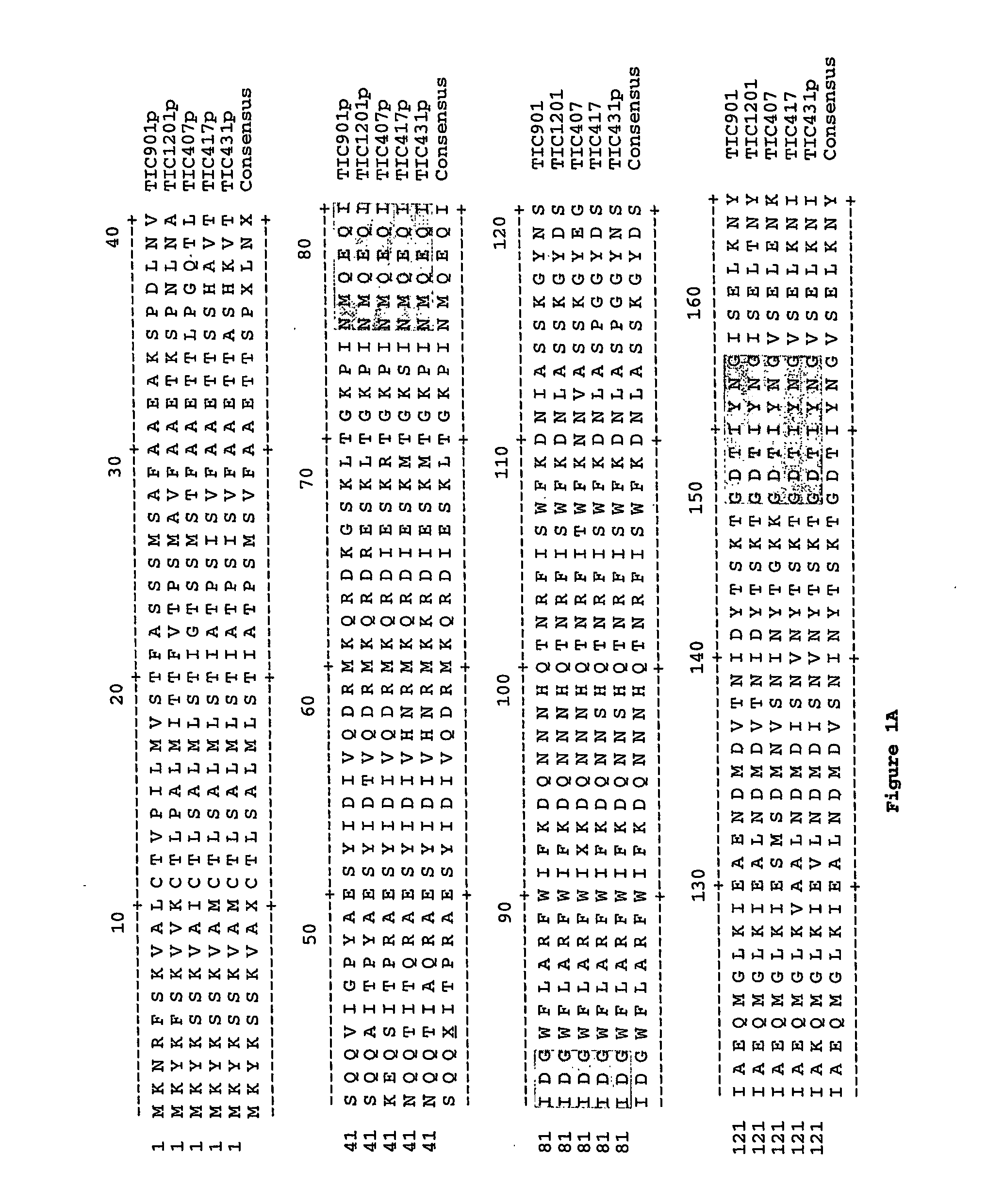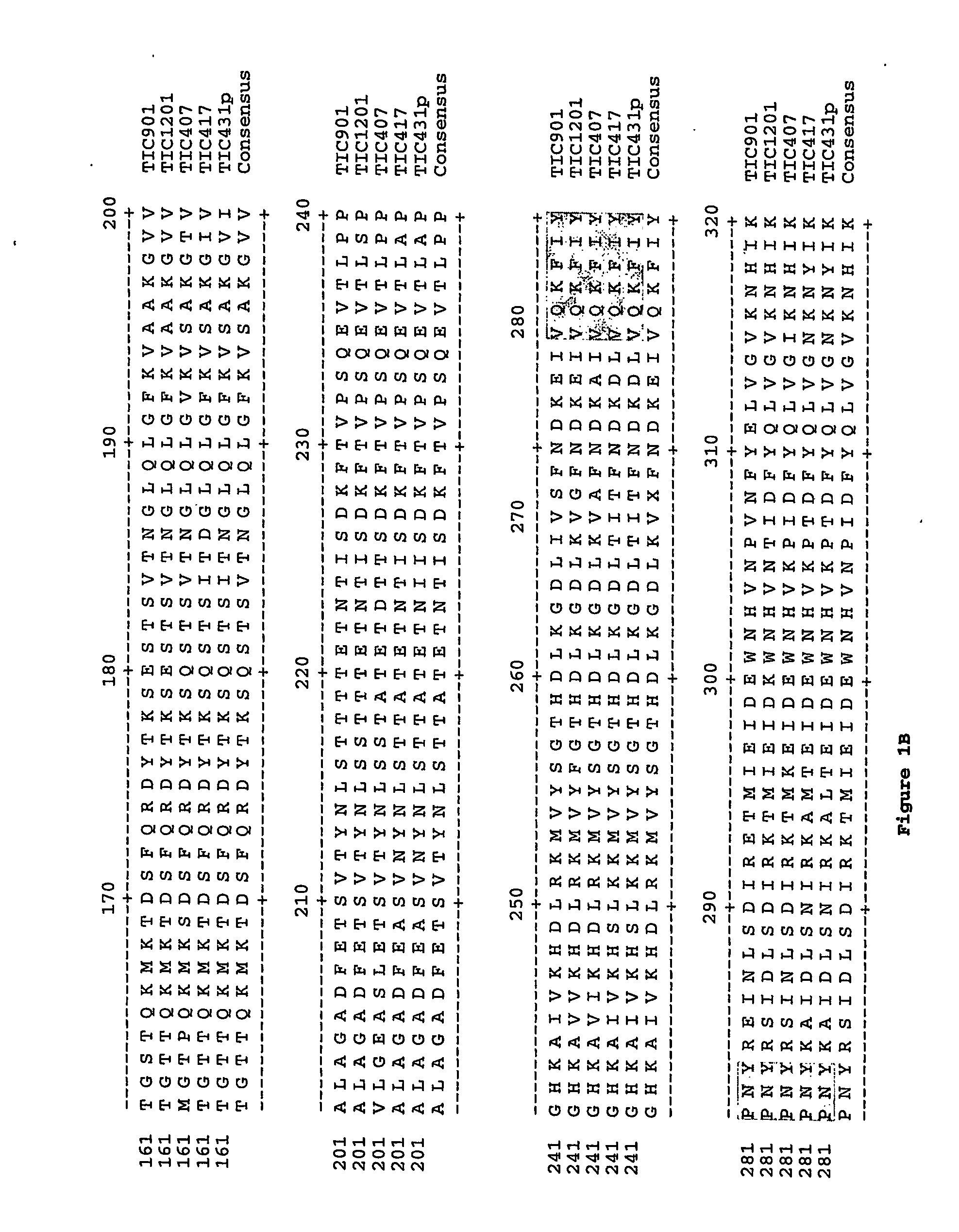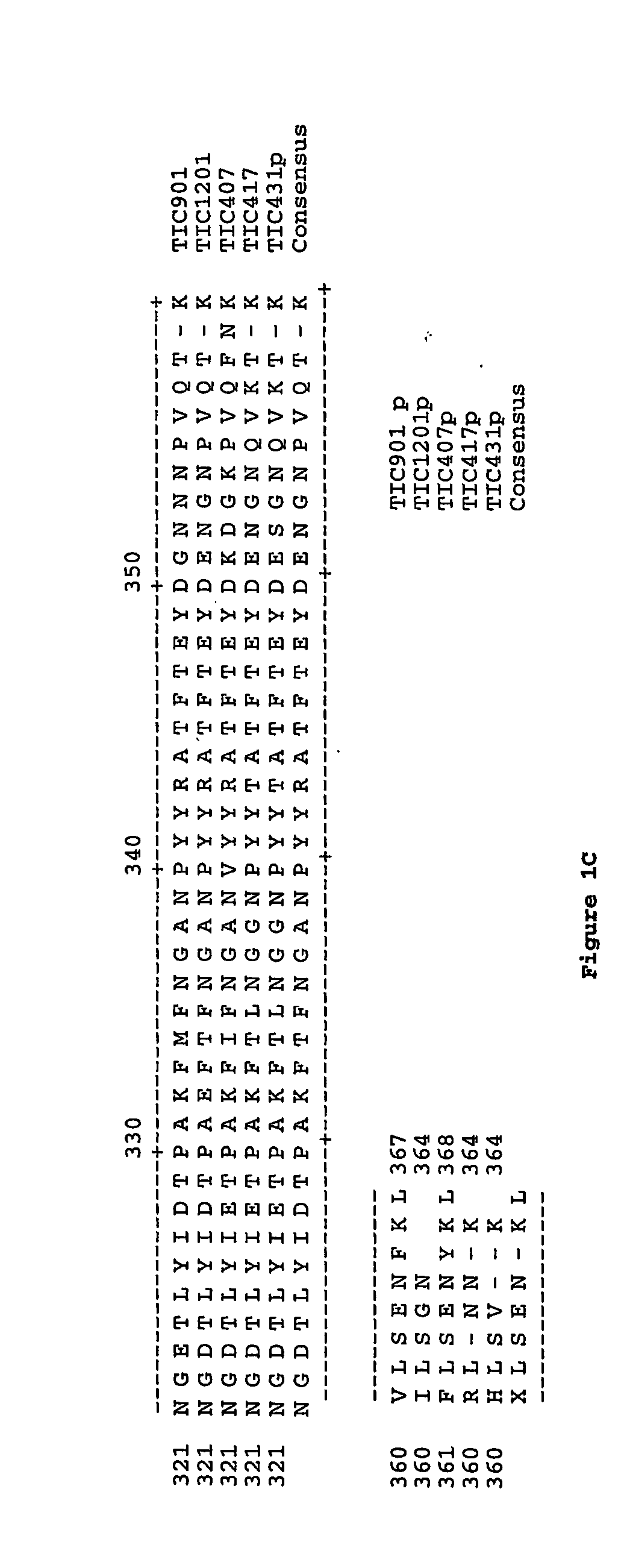Insecticidal proteins secreted from bacillus thuringiensis and uses therefor
a technology of insecticidal proteins and nucleotide sequences, which is applied in the field of new family of insecticidal protein nucleotide sequences encoding insecticidal proteins and insecticidal fragments, can solve the problems of high toxicity of crystal proteins to specific insects, and achieve the effect of effectively controlling a particular insect pest species, reducing the likelihood of insecticidal composition resistance, and improving insect resistance managemen
- Summary
- Abstract
- Description
- Claims
- Application Information
AI Technical Summary
Benefits of technology
Problems solved by technology
Method used
Image
Examples
example 1
[0182] This example illustrates the identification of an insecticidal protein secreted into the media by B. thuringiensis strain EG2158.
[0183] EG2158 is a wild-type B. thuringiensis strain originally isolated from soybean grain dust (Donovan et al., 1988). During sporulation cells of EG2158 produce rhomboid-shaped crystals composed of a 73 kDa protein identified to be Cry3C. Spore crystal mixtures of EG2158 are toxic to Colorado potato beetle larvae. Bacillus megaterium transformed with the cloned cry3C gene exhibit toxicity to CPB larvae similar to strain EG2158 suggesting that the coleopteran-specific toxicity of EG2158 is due to the Cry3C crystal protein (Donovan et al., 1988). Therefore, it was unexpected that spent media used for fermentation of strain EG2158, which does not contain spores or Cry3C crystal protein, would be toxic to CPB because the processed spent media does not contain sufficient spores or Cry3 crystal protein to exhibit measurable insecticidal toxicity.
[018...
example 2
[0187] This example illustrates a means for purifying an insecticidal protein, designated herein as TIC901, from the spent culture media produced by fermentation of Bacillus thuringiensis strain EG2158.
[0188] Proteins present in the EG2158 ASD were evaluated by sodium dodecylsulfate polyacrylamide gel electrophoresis (SDS-PAGE). 30 μl of the dialysate was mixed with 15 μl of Laemmli protein solubilization buffer (Mol. Biol. 80:575-599; 1973) and heated to 100° C. for 5 minutes. Approximately 25 μl of the mixture was loaded onto a 10% SDS polyacrylamide gel. The proteins were visualized after electrophoresis after staining with Coomassie Brilliant Blue. The results indicated that the EG2158 ASD contained about thirty proteins ranging in size from approximately 20 kDa to about 120 kDa.
[0189] 2 milliliters of the EG2158 ASD was applied to a diethylaminoethyl (DEAE) column equilibrated with 20 mM Tris-HCl pH 7.5. Proteins were eluted from the column with a 20 milliliter gradient of Na...
example 3
[0191] This example illustrates the isolation and identification of a nucleotide sequence from EG2158 that encodes the TIC901 protein.
[0192] Proteins in the EG2158 QA-toxic fraction were size-separated by SDS-PAGE without Coomassie staining. Separated proteins were transferred from the SDS-PAGE to a polyvinylidene difluoride (PVDF) membrane by electrotransfer. The PVDF membrane was stained briefly with Coomassie dye and the portion of the membrane containing the purified TIC901 protein was excised with a clean razor blade and subjected to automated Edmund degradation sequencing. The results indicated that the TIC901 protein contained an amino terminal amino acid sequence corresponding to NH3-V I G P Y A E S Y I D R V Q D-COO− as set forth in SEQ ID NO:1.
[0193] It is widely recognized that most proteins produced in vivo in bacterial systems exhibit a methionine (M) residue at their N-terminus. The fact that the N-terminus of the TIC901 protein did not contain an amino terminal meth...
PUM
| Property | Measurement | Unit |
|---|---|---|
| molecular weight | aaaaa | aaaaa |
| molecular weight | aaaaa | aaaaa |
| mass | aaaaa | aaaaa |
Abstract
Description
Claims
Application Information
 Login to View More
Login to View More - R&D
- Intellectual Property
- Life Sciences
- Materials
- Tech Scout
- Unparalleled Data Quality
- Higher Quality Content
- 60% Fewer Hallucinations
Browse by: Latest US Patents, China's latest patents, Technical Efficacy Thesaurus, Application Domain, Technology Topic, Popular Technical Reports.
© 2025 PatSnap. All rights reserved.Legal|Privacy policy|Modern Slavery Act Transparency Statement|Sitemap|About US| Contact US: help@patsnap.com



